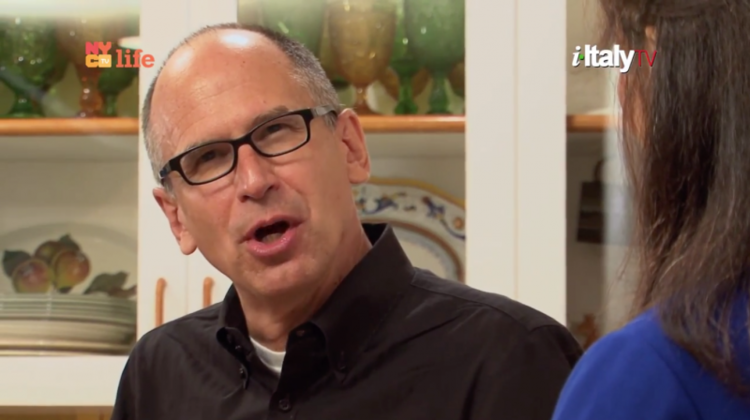


Tell me about your connection with Italy.
My connection with Italy is old. I grew up in San Francisco. Wherever I was, North Beach was always just around the corner. San Francisco’s version of Italian-American isn’t really Italian-American—it’s more pure, more Italian-Italian, more Southern Italian. For me, my primal memories of food revolve around Italian cooking.
Did you start cooking or did your family cook when you were young?
My dad, not my mom, was the chef in the house. My mom was very good at opening bags of frozen food and heating them up.
My dad, however, was an amazing cook. In fact, he used to eat at all the great Italian restaurants in the 1960s. He was a traveling salesman. He would come home and he would duplicate, to the letter, these wonderful dishes that he’d eaten.
Back then America’s idea of Italian food was usually veal scalloppine and scampi. Wow, what delicious food! My dad made a really fine classic ragù. So, I fell in love with the fundamentals of Italian cooking at a very early age.
On your travels to Italy, which regions affected your love for Italian food?
The entire country, really. But the places that moved me most were Bologna and all of that fabulous, rich, earthy food that tastes like pure umami. Also, food from the deep South, in particular Salerno and around Naples. It’s like you’re in this completely different food universe when you think about those two parts of Italy. Both had a great impact on me.
How did you divvy up the Italian articles during your nine years as editor-in-chief of Saveur?
When I was working at Saveur, understanding Italian culture through its extraordinarily
delicious and different kinds of cooking was completely natural. Our readers literally craved
Italian content. You could dedicate an entire magazine to it every year for decades and still
not tell half the story. The same goes for Rodale’s Organic Life; the basic ways in which Italian
food is cooked matches the kind of material and content our readers are looking for. It’s
the way they cook: this very pure, un-fancy, gorgeous way of cooking that celebrates the
delicious taste of an ingredient. You can pull all sorts of tricks in the kitchen, but if you don’t have really great, delicious, fantastic ingredients, you’re not getting the real experience.
Are there any articles you have assigned over the years that stand out as best capturing Italy?
There are so many. But I think my very favorite Italian piece at Saveur dates many years back,
from about 1996 to1998. The entire staff collaborated on a forty-five page piece on Venice,
on Venetian food and culture. It was eye-poppingly beautiful! I can picture some of the recipes
right now…
How much attention will you pay Italy in your new magazine Rodale’s Organic Life?
Because Italy has been such a leader in organic foods—it’s where Slow Food was born, after
all—I predict it will appear in our pages often. As a matter of fact, we have an upcoming
story about organic Sicily, and our January issue features an organic pasta, Monograno
Felicetti. What I love about your work is how much color you add— culture, travel, history...
My internal motto is: if you’re really interested in understanding a place you’re not familiar with, look at what that place eats. There is no better way to get at the heart and soul of a
culture than to taste what it eats. It’s also a very pleasurable way to do anthropology!
* Noted public speaker and food historian Francine Segan co-produces with i-Italy the TV series “Americans in Love With Italy.
Watch the episode of James Oseland and Francine Segan >>> [2]
Source URL: http://test.iitaly.org/magazine/focus/art-culture/article/italian-food-connection
Links
[1] http://test.iitaly.org/files/jamesoseland1452312213png
[2] https://youtu.be/tOADlIG6YwQ